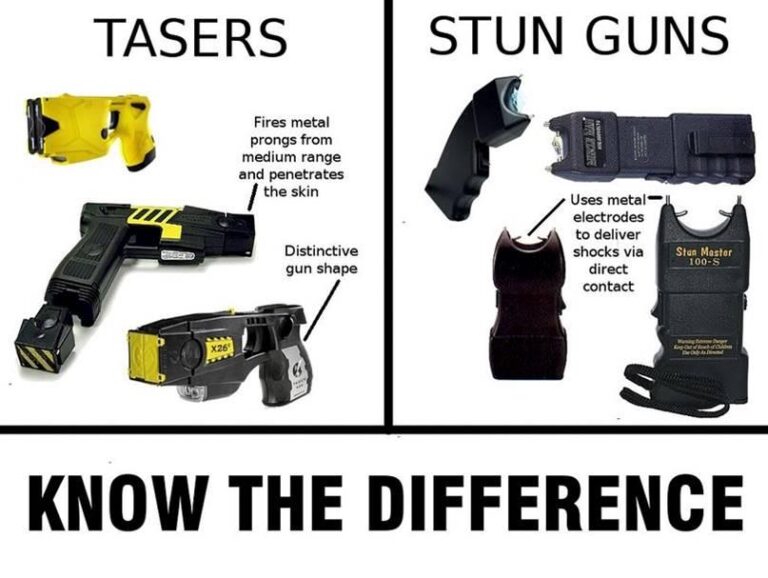Table of Contents
- Understanding Voltage Variations and Their Impact on Stun Gun Effectiveness
- Comparing Design Quality and Safety Features in Low-Cost and High-End Models
- How Voltage Influences Battery Life and Device Longevity
- Expert Recommendations for Choosing the Right Stun Gun Voltage for Personal Protection
- In Retrospect
Understanding Voltage Variations and Their Impact on Stun Gun Effectiveness
Voltage is a critical factor when it comes to the operational efficiency of stun guns. While many low-cost models advertise high voltage ratings, these figures often don’t translate into actual stopping power. The quality of components and the design of the internal circuitry can lead to significant fluctuations in voltage output during use, which directly affects the device’s ability to incapacitate a target. In contrast, high-end stun guns incorporate advanced voltage regulation technology, ensuring a more consistent and reliable discharge every time. This consistency is what separates a mere deterrent from a genuinely effective self-defense tool.
Understanding how voltage varies within different stun guns also sheds light on additional performance aspects:
- Arc Stability: High-end devices maintain a steady, powerful arc, while cheaper models often produce weak or intermittent sparks.
- Battery Efficiency: Superior voltage regulation conserves battery life and keeps the stun gun ready for multiple uses.
- Safety Mechanisms: Enhanced voltage control minimizes the risk of erratic discharges that could pose danger to the user.
Ultimately, the voltage difference is not just about numbers on a spec sheet, but about real-world performance and reliability when you need it most.
Comparing Design Quality and Safety Features in Low-Cost and High-End Models
When diving into the differences between affordable and premium stun guns, design quality clearly sets them apart. Low-cost models often feature basic plastic casings and simpler internal components, which can affect durability and performance under stress. In contrast, high-end stun guns utilize reinforced materials such as impact-resistant polymers and ergonomic designs that enhance user comfort and grip security. The superior craftsmanship in expensive models frequently results in a more balanced weight distribution and precision-engineered triggers, contributing to overall reliability during critical moments.
Safety mechanisms also show marked disparities across price points. Economical stun guns generally include rudimentary safety switches or removable safety pins, sufficient for preventing accidental discharge but limited in advanced protections. Conversely, premium versions incorporate multiple layers of safety features, such as biometric locks, dual-action triggers, and automatic cut-off timers to minimize misuse and accidental harm. Additionally, high-end models may have clear visual indicators and LED alerts that communicate battery life and operational status, elevating user awareness and confidence.
- Low-Cost Models: Basic plastic housing, single safety switch, lower ergonomic comfort
- High-End Models: Reinforced casing, multi-layer safety systems, biometric locks, ergonomic design
How Voltage Influences Battery Life and Device Longevity
Understanding the role of voltage is crucial when comparing stun guns across price points. Higher voltage outputs often provide quicker and more effective immobilization; however, this power comes at a cost. Excessive voltage can lead to increased heat generation within the battery and internal components, accelerating wear and reducing overall battery life. In contrast, lower voltage models typically operate with less strain on their cells, potentially extending the frequency between replacements but at the expense of immediate stopping power. Balancing voltage is key to achieving optimal device performance without sacrificing longevity.
Moreover, the internal design quality in high-end stun guns typically includes advanced voltage regulation and superior battery management systems. These often feature:
- Overvoltage protection to prevent damage caused by electrical spikes.
- Efficient power delivery that maximizes device runtime on a single charge.
- Thermal management to keep temperatures within safe operating ranges.
Low-cost units may lack these safeguards, leading to premature degradation and a shorter lifespan. Thus, while voltage is an essential factor, the engineering behind controlling and utilizing that voltage effectively plays an equally vital role in ensuring your stun gun remains reliable over time.
Expert Recommendations for Choosing the Right Stun Gun Voltage for Personal Protection
When selecting a stun gun, it’s essential to understand that voltage alone doesn’t dictate effectiveness. High voltage ratings can be impressive on paper, but the device’s overall design, electrical output quality, and pulse duration play significant roles in delivering a reliable self-defense tool. For personal protection, aim for devices offering sustained electric pulses rather than momentary spikes. This ensures the stun gun can disrupt an attacker’s motor functions more effectively, increasing your chances of creating a safe escape.
Consider these expert tips when evaluating stun gun voltage options:
- Match voltage with your comfort and usage scenario: Higher volts may not be necessary for close-range indoor use, while outdoor or unpredictable environments could justify more powerful models.
- Focus on amperage and pulse frequency: A moderate voltage with optimal amperage often causes more effective incapacitation than a simple high voltage rating.
- Check for safety features: Safe grip designs, activation switches, and lock modes protect the user and prevent accidental discharge.
- Evaluate battery life and recharge options: Reliable power supply is critical; a weak battery can reduce the stun gun’s effectiveness regardless of voltage.
In Retrospect
In conclusion, understanding the voltage differences between low-cost and high-end stun guns is crucial for making an informed purchase that prioritizes both safety and effectiveness. While higher voltage stun guns generally offer stronger deterrence, factors such as build quality, arc stability, battery life, and safety features play equally important roles in overall performance. By weighing these elements carefully, you can choose a stun gun that not only fits your budget but also meets your personal security needs with confidence. Stay informed, stay safe!Check Our Other Blogs
- StunGun – Your Trusted Source for Stun Guns, Laws, and Self-Defense Tips
- PepperSprayLaws – Your Trusted Resource for Pepper Spray Information
- StunGunLaws – Your Trusted Guide to Stun Gun Legality and Safety





